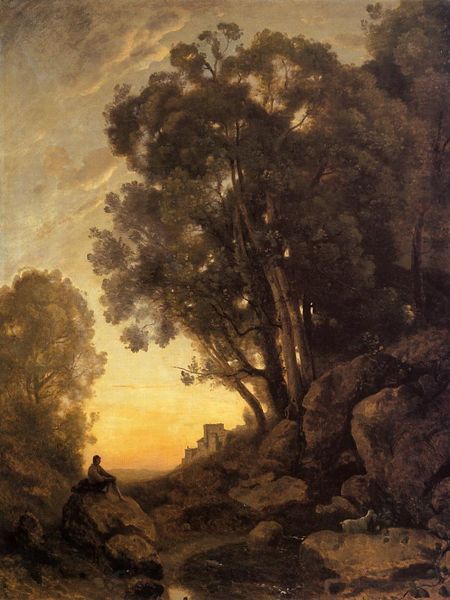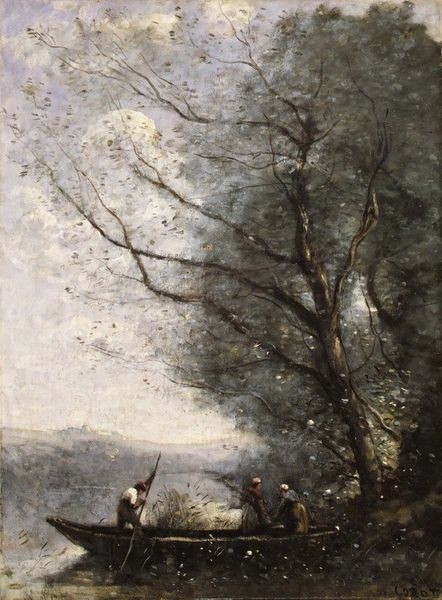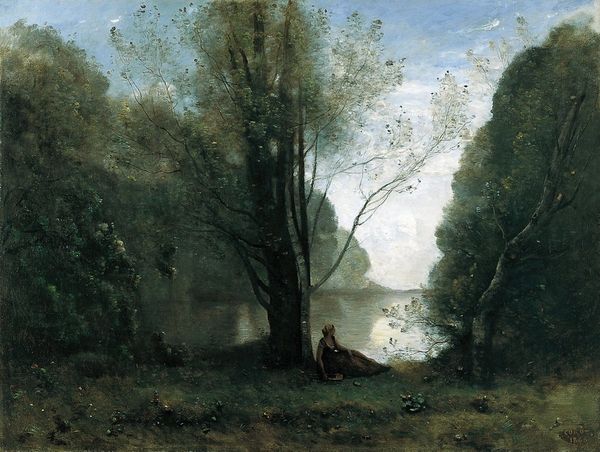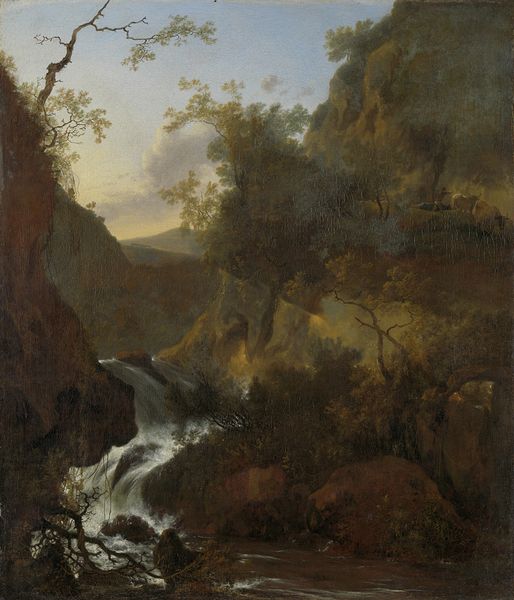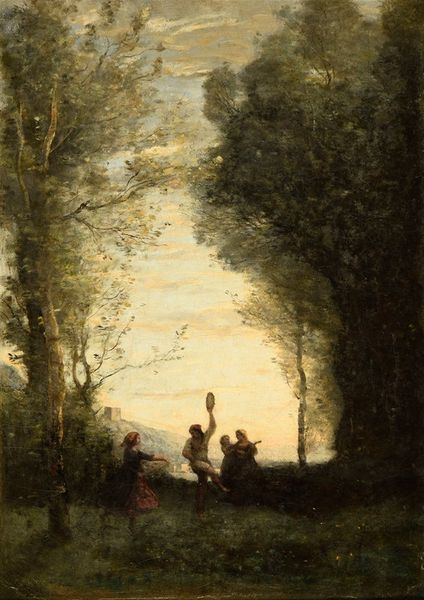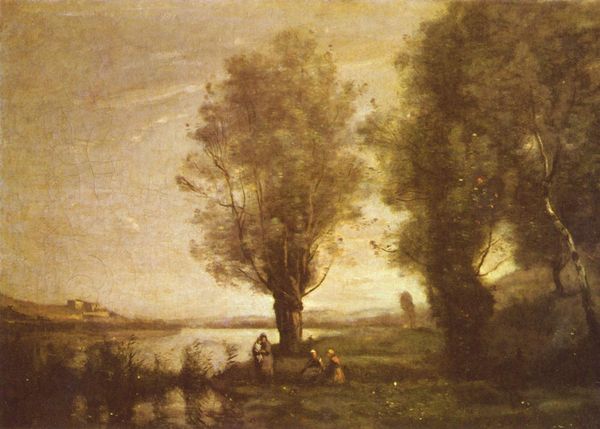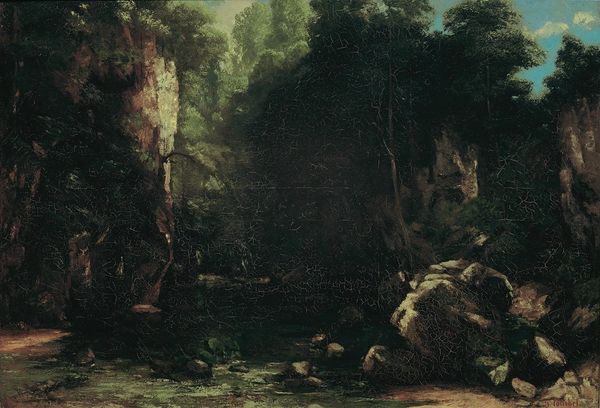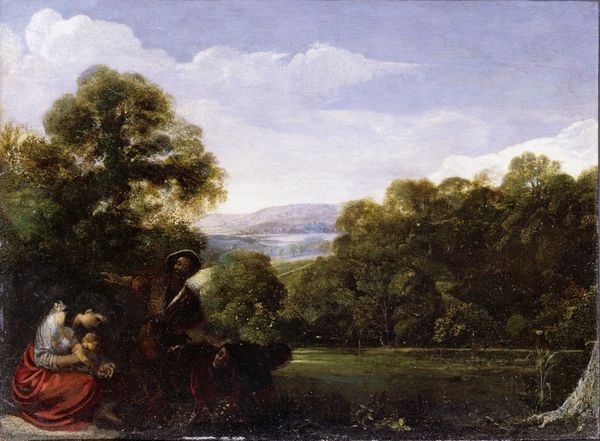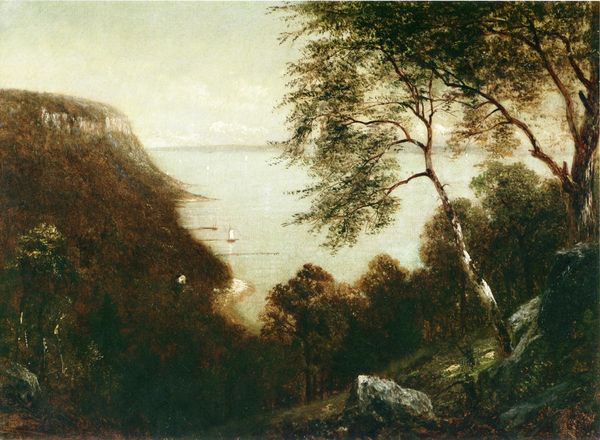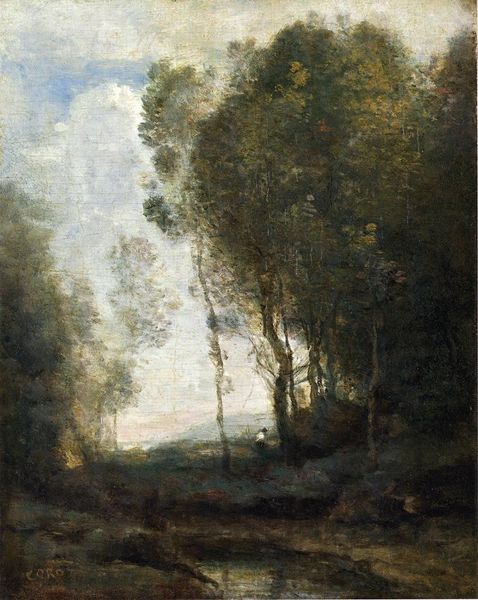
Copyright: Public domain
Curator: Looking at Camille Corot’s 1870 painting, “Goatherd Charming His Goat with a Flute," I’m struck by its ethereal quality, almost like a dreamscape rendered in oil. What do you think? Editor: Immediately, I’m drawn to the solitary figure of the goatherd. He's literally placed on the periphery of nature, raising questions about class, access to resources, and who gets to perform the 'pastoral'. Curator: True, there's a contrast there. Let's look at the materiality. Corot's application of oil paint, in such soft, feathery strokes, dissolves forms rather than defines them. It gives a sense of hazy light. This contrasts sharply with what must have been a different material reality for working pastoral laborers, who likely didn't have the option of indulging in bucolic fantasies! Editor: Exactly. Who is this idealized shepherd for, and what work allows him the space and luxury to pursue music within an arcadian setting? Think of how race and class further complicate that idealized narrative... I question if there are multiple silences happening simultaneously! Curator: Well, it seems, Corot’s process included preparatory sketches done en plein air, meaning he was literally present, in the environment, making choices about composition and color based on immediate observation. Still, what did he do with the observation later? I'm always interested in the transition from working sketches, to the studio environment. Editor: I wonder, were these lushly romanticized visions part of a conscious effort to, perhaps, avoid representing the often brutal realities facing marginalized populations in France at the time? The artifice almost feels like an endorsement. Curator: Perhaps, yet Corot was working in a period defined by rapid industrial expansion and the growth of a wealthy bourgeois class hungry for sentimental landscapes. Were Corot's buyers seeking an escape from urban industrialization through nostalgic returns to idealized agricultural environments? It raises questions about art production and economic drivers. Editor: Right! By placing this serene, seemingly classless figure in the landscape, is Corot not actively participating in the erasure of complex histories that would disrupt the consumption habits of these patrons? What impact did it have when images like this entered the world, both at the time and in its later interpretations? Curator: Food for thought. Thanks for providing such thoughtful considerations regarding Corot's material world and it’s production. Editor: Absolutely! Thanks for tracing how landscape can perform and sustain multiple and perhaps competing narratives, and how it shapes consumption.
Comments
No comments
Be the first to comment and join the conversation on the ultimate creative platform.

